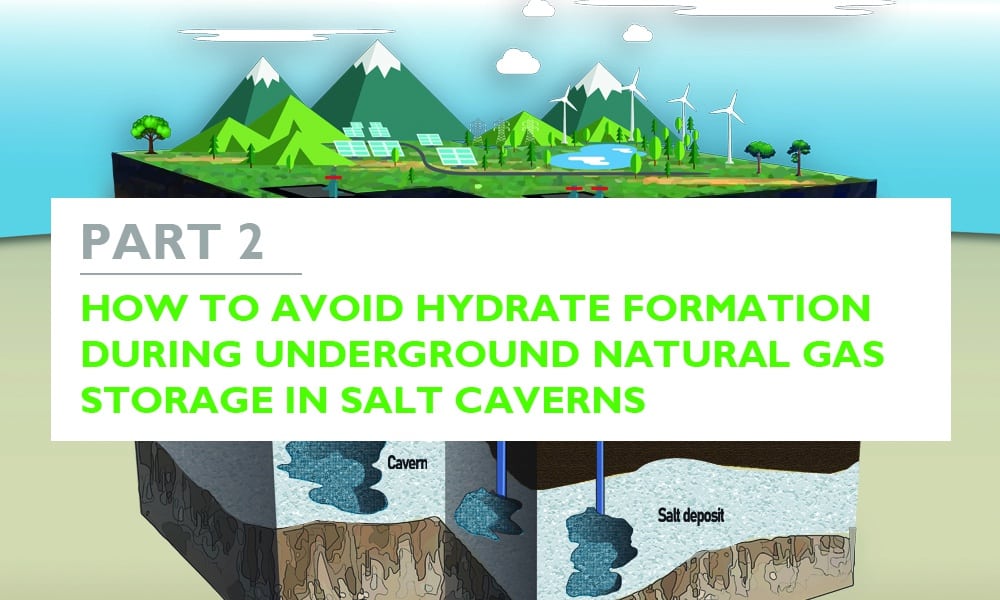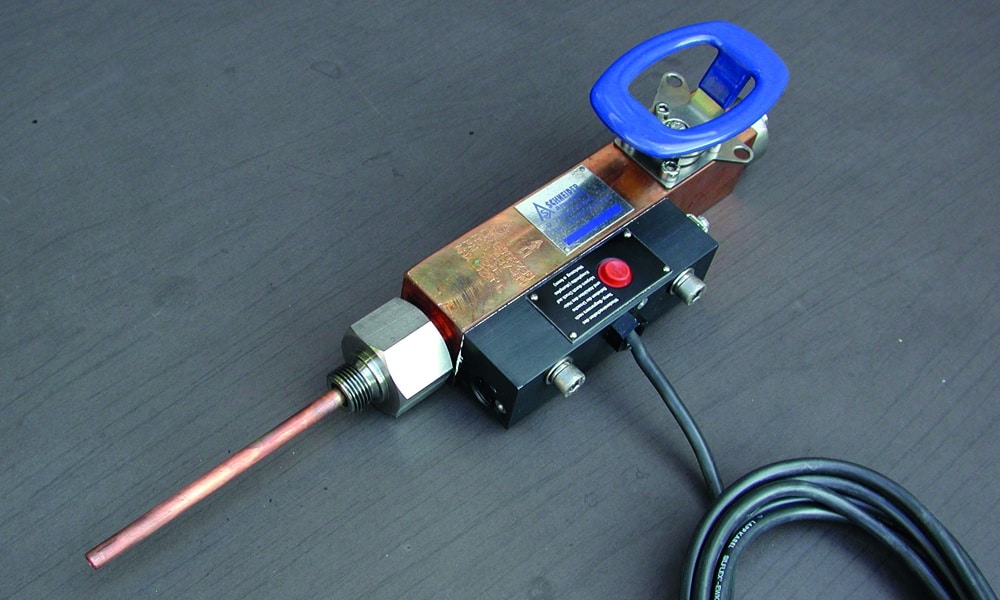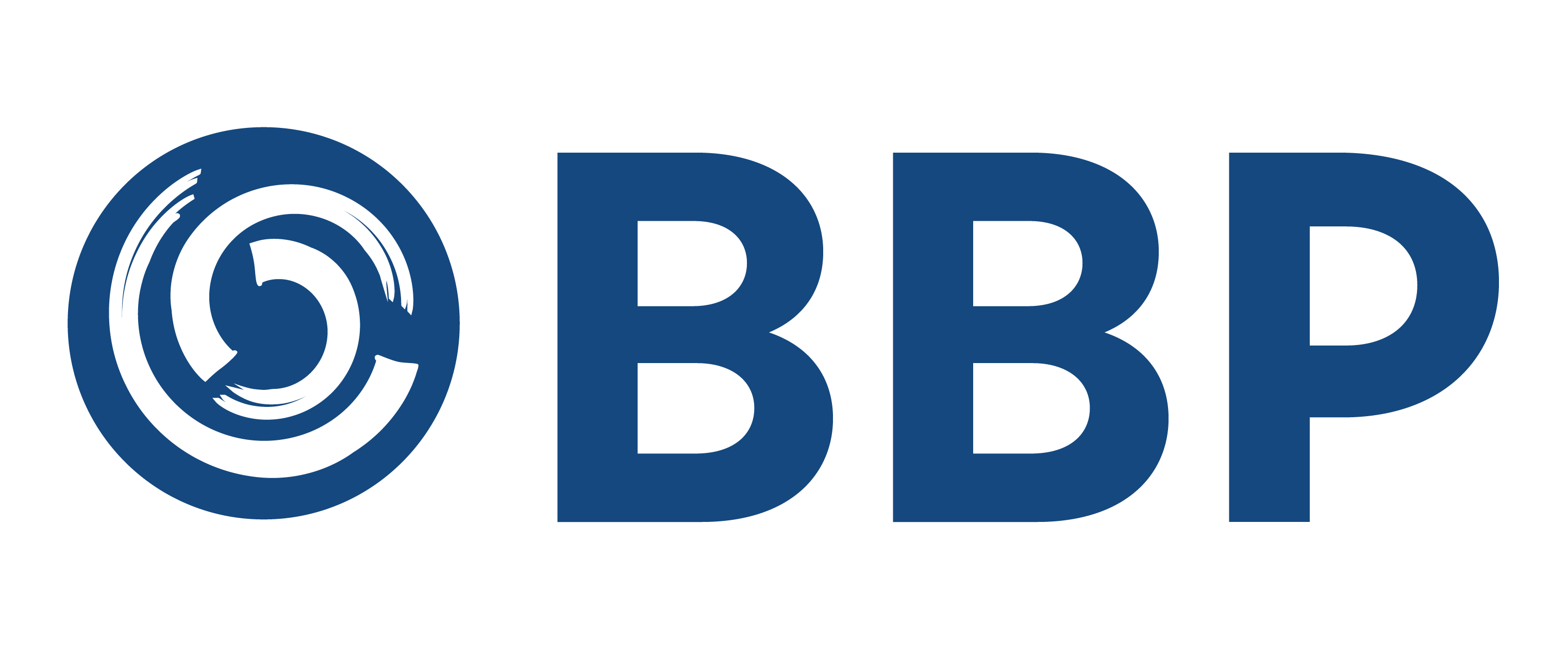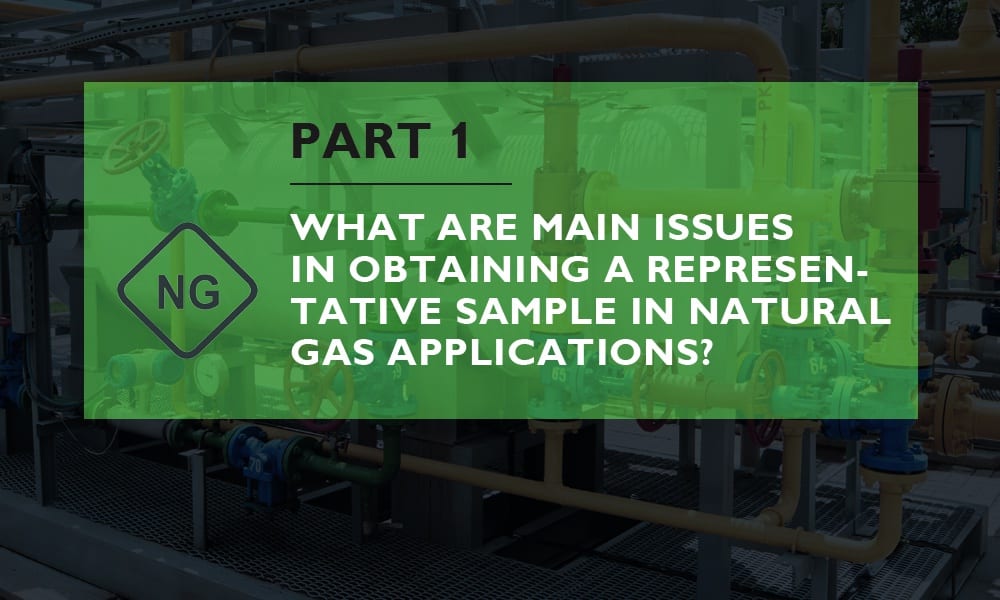
How to avoid hydrate formation during underground natural gas storage in salt caverns
In my last article, I gave you an overview of underground natural gas storage in salt caverns and the challenge of hydrate formation.
In this case study, I focus on how to avoid hydrate formation in natural gas pressure measurement pipelines. I describe the traditional approach to avoid hydrate formation during natural gas storage in salt caverns. Furthermore, I explain a patented customer solution that AS-Schneider has industrialized.
How to avoid hydrate formation?
If a single one of these components is missing, methane hydrates will not form. Based on these conditions, there are five methods of preventing hydrate formation:
Water
Presence of light hydrocarbons
Low temperature
High pressure
If a single one of these components is missing, methane hydrates will not form. Based on these conditions, there are five methods of preventing hydrate formation:
- Remove moisture from the system
- Maintain system operating temperature above the threshold value
- Maintain system pressure below the hydrate formation threshold
- Use hydrate inhibitors to delay crystal growth
- Use anti-agglomerates to prevent aggregation of crystals
The threshold temperature for hydrate formation varies with the composition of the gas. In general, it is around 24°C. Above this temperature, the formation of hydrates is unlikely.
The traditional approach to avoiding hydrate formation in measuring lines is to heat the measuring points. This, however, is not a simple task. Gas pipes are typically thick-walled and often flanged. It is extremely difficult to transfer heat from outside to the gas inside. At low outdoor temperatures, this method is very inefficient and consumes a significant amount of energy.
Modern approach: Avoid hydrate formation by using a heatable sampling probe
Natural gas storage operators in Europe, struggling with the issue of hydrate formation in measuring lines, turned to AS-Schneider with their challenge.
Together with one of these customers, we industrialized the customer-patented solution to avoid hydrate formation in the measuring line. Due to the customer’s application, our engineering team complemented the solution with a build in ball valve which did not exist in the patent before.
The heatable sampling probe consists of a copper block with an integrated shut-off ball valve and a sensor tube. The copper tube extends into the inner wall of the transport piping. There it heats the gas thus preventing hydrate formation. An electrical heating block, screwed to the body, heats the assembly through induction.
This energy-efficient heating block independently regulates the temperature and is extremely safe. Depending on the wall thickness, the length of the probe can be adjusted to selectively transfer heat through appropriate wall or flange thickness.
The heated sampling probe does not allow hydrate formation to clog the lines. It transfers the full static pressure of the gas without any restriction. Thus, ensuring accurate measurements. The ball valve, integrated with the probe, functions as an initial shut-off between the transport and gas impulse lines.
The valve can withstand a pressure of up to 250 bar and a maximum temperature of 120°C. In addition, the specially designed ball valve offers the following benefits:
- Two independent sealing systems that ensure no gas can escape from the valve (primary PTFE ball seats with O-rings on the spindle)
- Dirt resistant seals
- The soft-seated valve can be operated easily even under high pressure
- Anti-static valve design to protect against gas explosions
- Tamper-proof, lockable valve handle
Our solution to the natural gas hydrate issue in measuring lines has been proven to work safely and efficiently in the field.
The integrated ball valve greatly simplifies installation. All the essential components are fitted in a single housing.
The space-saving heated sampling probe is being successfully used in several storage facilities. All operated by well-known companies across Europe and the world.







